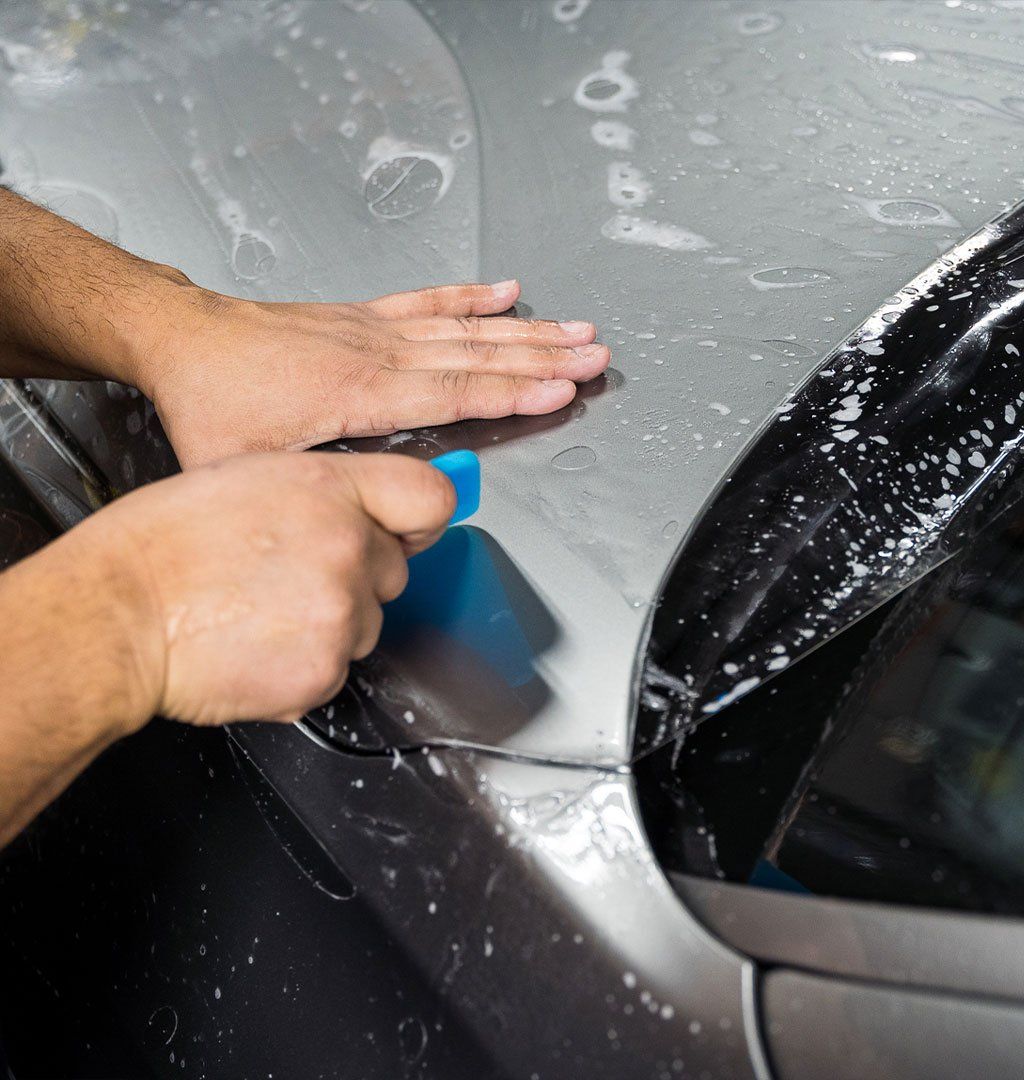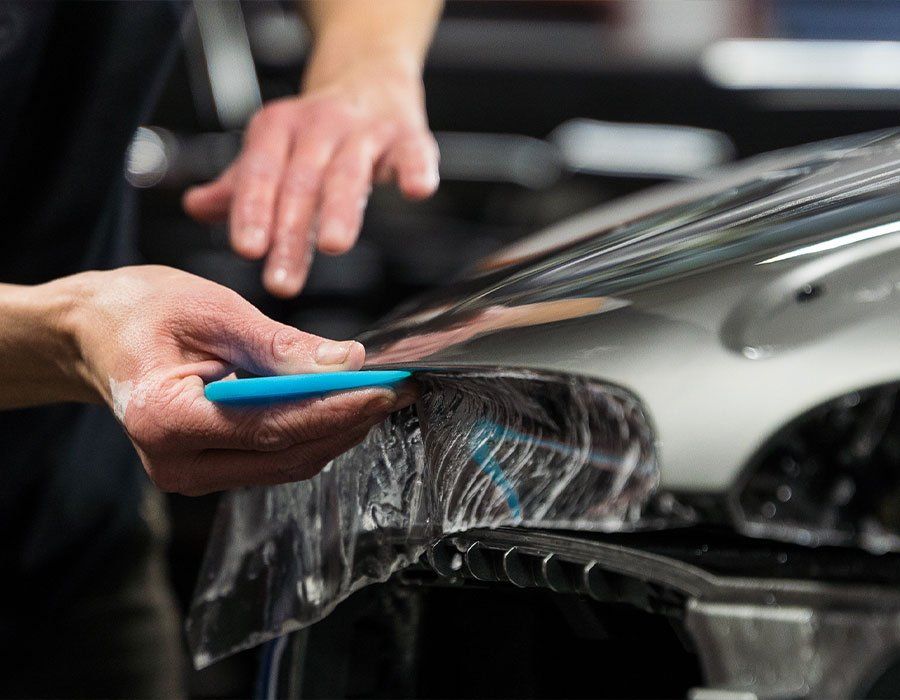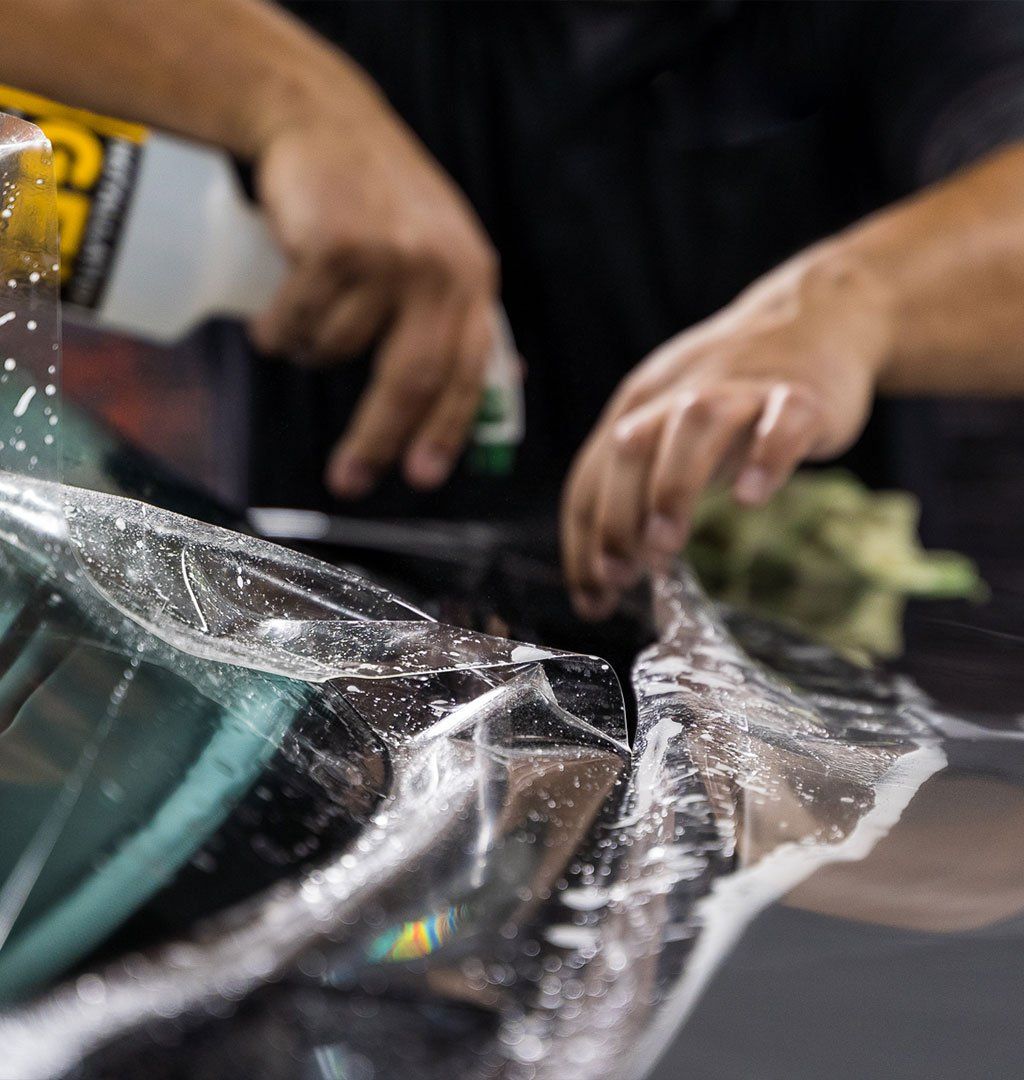Does PPF Eliminate the Need for Touch-Up Paint Jobs on Your Vehicle?
CALL (708) 574-8496
GET A FREE ESTIMATEWhen it comes to keeping your car looking brand new, Paint Protection Film (PPF) has gained popularity as a top choice for many vehicle owners. But does it truly take the place of those annoying touch-up paint jobs? The idea may sound appealing, especially when considering the costs and hassle associated with frequent repairs. After all, who wouldn’t want a protective barrier that promises to fend off chips and scratches? In this article, we’ll dive into how PPF works and whether it can really save you from ever needing a touch-up again. Let's see if this layer of protection is all it’s cracked up to be!
While Paint Protection Film (PPF) significantly reduces the risk of damage from rock chips and scratches, it does not entirely eliminate the need for occasional touch-up paint jobs. Some users have reported that PPF can still be penetrated in certain instances, meaning minor dings and chips may occur over time that require traditional touch-up solutions.
What is Paint Protection Film (PPF)?
Paint Protection Film, commonly known as PPF, serves as a robust shield for your vehicle's exterior. Made from thermoplastic urethane, this film is designed to resist the wear and tear that daily driving can impose. When you consider that vehicles, especially those like Teslas, possess approximately only 3 microns of paint, it's clear why applying PPF might be an appealing choice for car owners who want to keep their finish looking pristine.
Originally developed for military applications, where protecting valuable equipment from abrasions was crucial, PPF has transitioned into everyday use for automotive enthusiasts and casual drivers alike. Its flexibility and durability allow it to conform seamlessly to your vehicle's curves, offering a near-invisible barrier against minor dents and scratches caused by rocks or debris on the road.
Here are a few important features of PPF:
- Self-healing: Minor scratches disappear when exposed to heat, whether from sunlight or warm water.
- UV Resistance: Blocks up to 99% of harmful UV rays—this means less fading and oxidation over time.
- Environmental Toughness: Can withstand extreme temperatures, from -40°F to 200°F (-40°C to 93°C), without losing its protective qualities.
By understanding these components, we can better appreciate how effective PPF can be in safeguarding your vehicle against the elements it encounters daily. This protective technology prompts further exploration of its capabilities in preventing specific types of damage.
Effectiveness in Preventing Scratches and Dings
Paint Protection Film (PPF) is more than just a layer of plastic; it's engineered to be a formidable barrier against the wear and tear your vehicle faces day after day. When it comes to protecting underlying paint from scratches and dings caused by road debris, PPF excels remarkably well. It acts almost like armor for your car's exterior, absorbing impact forces and dispersing them over a larger area. This action minimizes damage to the paint beneath, saving you from costly touch-up jobs down the road.
Think of it like cushioning in a sports shoe. Just as that cushioning protects your foot from hard impacts while running, PPF shields your car’s paint job from hazardous road elements. According to a comprehensive study by the International Carwash Association, vehicles adorned with PPF are 70% less likely to suffer from paint chipping compared to their unprotected counterparts. This statistic underscores PPF's effectiveness in safeguarding your vehicle’s aesthetics for years to come.
While the initial investment for PPF installation might hover around $2,000, it could save thousands in paint repairs later on—especially for those who drive frequently or take road trips where chips are more likely. Moreover, considering vehicles like Teslas use substantially less paint—about three microns total—the preservation offered by PPF becomes even more critical in maintaining its pristine finish. As we shift our focus, another compelling aspect to consider is how PPF can rejuvenate itself from minor imperfections, adding even more value for car owners who wish to preserve their vehicle's appearance over time.
Self-Healing Properties Explained
One of the most impressive features of modern Paint Protection Film (PPF) is its ability to self-heal from minor scratches and scuffs, which sets it apart from traditional protective methods like touch-up paint. The technology behind this remarkable feature lies in the composition of PPF. Specifically, the top layer is made from an elastomeric polymer designed to respond to heat. This means that when a scratch occurs, the heat—be it from the sun or even a warm rinse—encourages the material to return to its original state.
Imagine you're driving your beloved vehicle on a sunny day; perhaps you park it for a while, and then, upon returning, you discover some light scratches marring the surface. The good news is that, thanks to those self-healing capabilities, those blemishes can disappear within hours. It's a fascinating process: as the temperature increases, the polymer molecules in the film become more fluid, allowing them to reform and fill in the scratches, often rendering them virtually invisible.
Studies show that PPF can reduce the visibility of scratches by up to 90% after self-healing. This not only enhances your vehicle’s aesthetics but can also extend the film's longevity by decreasing wear over time. The thickness of PPF generally ranges from 6 to 8 mils (0.006 to 0.008 inches), significantly contributing to its durability and self-repairing properties. When these films are installed properly, they act as effective shields against everything from rock chips to minor abrasions. While they may not prevent every scratch or ding—some deeper impacts will still require attention—the self-healing aspect certainly reduces the overall frequency of needing touch-up paint jobs.
However, it's also important to note that while PPF is remarkably resilient, there comes a point in time—often around five years post-application—when users report visible scratches on the film itself. Eventually, a replacement or correction may be necessary for maintaining both appearance and protective function. Given these attributes, exploring how PPF stacks up against conventional touch-up paint can reveal critical insights about their effectiveness and long-term cost-efficiency for discerning vehicle owners.
PPF Versus Traditional Touch-Up Paint
When considering how to maintain your vehicle's sleek appearance, the scope of protection provided by Paint Protection Film (PPF) is arguably its most compelling advantage. Unlike typical touch-up paints, which primarily address minor imperfections, PPF creates a barrier against a wide range of environmental hazards. Imagine this: UV rays can fade your car’s finish over time, while bird droppings can etch into the paint if not removed quickly enough. PPF effectively shields your vehicle from these dangers, ensuring that it retains its showroom shine for years.
PPF offers a peace of mind that traditional paint solutions simply can't deliver. Similarly, the aesthetic quality of both products deserves attention. Touch-up paints often fall short when it comes to matching the factory-finish—or Original Equipment Manufacturer (OEM)—texture and color. Even after careful application, you may find the repaired areas glaringly obvious against your vehicle's pristine coating. On the other hand, PPF is designed to be virtually invisible once applied. This means you can enjoy ongoing protection without compromising on visual appeal.
However, all this protection comes at a cost—both initially and in terms of long-term upkeep. Generally, opting for PPF represents a larger financial investment upfront, with average installation costs typically around $2,000 depending on coverage area. While this may seem steep compared to touch-up applications costing between $50 to $150 each, it’s important to consider how quickly those repeated expenses can add up. As many users have noted, touch-up paint jobs might require reapplication every few years as they don’t have the same longevity as a well-applied PPF. In some instances, frequent touch-ups could catch up to or even exceed the initial cost of PPF.
Thus, if you prioritize a long-lasting solution that requires less maintenance over time, then investing in PPF could prove itself worth it. Think of it like putting up a sturdy fence versus repainting your house every few years—it’s easier to maintain something solid than it is to patch things up continuously. Individual needs largely dictate whether PPF or touch-up paint is more suitable. For those eager for an almost invisible protective coat able to handle real-world wear and tear while maintaining aesthetic integrity, PPF shines bright like their vehicles should. Conversely, those operating within tighter budget constraints might view traditional paint solutions as adequate for their less intensive needs.
Understanding these factors ensures your choice aligns with not only your preference but also your vehicular lifestyle moving forward. Exploring the aspects of longevity and overall performance will further illuminate the best protection for your investment.
Long-Term Durability of PPF
When you opt for Paint Protection Film (PPF), you're choosing a protective layer that boasts impressive longevity; on average, high-quality PPF can last anywhere from 5 to 10 years. This depends significantly on factors like environmental conditions and how well the film is maintained. For instance, if your vehicle is often exposed to harsh weather—such as intense UV rays, heavy rain, or snow—those elements could impact the film’s lifespan. Certain parts of the country even have climates that challenge the durability of PPF more than others.
Care plays an enormous role too, as routine washing with mild soap can help safeguard its integrity. While these films are crafted with self-healing properties that allow minor scratches to disappear over time when under heat, neglecting regular maintenance could shorten their lifespan. Studies reveal that avoiding harsh chemicals during cleaning can extend the film’s life considerably. Just like caring for your skin, treating your PPF right can yield lasting benefits.
Car owners who've kept up with routine cleanings have shared positive experiences; many reported their PPF held strong for over five years even through punishing winter months. However, some faced earlier replacements due to sweltering summer days and high temperatures, indicating that attention to climate is crucial when considering your PPF's life expectancy. Regularly inspecting the film for wear and tear can provide insights into its condition and help you address potential issues before they escalate. The beauty of PPF lies in its ability to protect your vehicle's paint from chips, scratches, and the relentless assault of debris encountered on the road. By investing in this preventative measure early on—followed by mindful upkeep—you not only maintain aesthetics but also enhance your vehicle’s resale value by preserving its showroom shine.
These considerations about longevity highlight the importance of selecting the right type of protection for your vehicle. Understanding what works best for you will ultimately ensure your investment pays off in both durability and appearance.
Making the Right Choice for Your Vehicle
Choosing between Paint Protection Film (PPF) and touch-up paint isn't just about the upfront cost; it's a decision woven into the fabric of your driving lifestyle. Each vehicle owner has unique considerations, and a deeper look into those factors can illuminate which option might suit you better.
Climate plays a significant role here. In areas prone to extreme weather conditions like hailstorms or blaring sunlight, PPF can be a lifesaver for your vehicle’s aesthetics. With its ability to absorb impacts and resist UV rays—boasting up to 99% protection against sun-induced fading—you’re investing in something that holds up over time. For instance, in my experience living in a region with unpredictable storms, having PPF has made a palpable difference in maintaining my car’s appearance despite nature's whims.
Then there's usage to consider. If you often find yourself embarking on long commutes or navigating rough terrains, the benefits of PPF become even more pronounced. Imagine driving through off-road trails, brushing past branches and rocks—PPF acts as a shield against these little battles, protecting your car's delicate surface from potential damage. I remember witnessing a friend’s SUV suffer constant scratches on its paint after just a few off-road excursions; had there been PPF applied, those unsightly dings could have easily been avoided.
Budget is another critical factor to weigh when making this decision. Now, let’s talk dollars and cents. Touch-up paints are indeed cheaper upfront—typically costing between $50 to $300 per incident—but consider the long-term game. Depending on how often you need touch-ups—especially if they come every few years—the costs can quickly add up. Users who invest in PPF may find they're saving money by reducing the frequency of repairs by up to 90% based on user reports. It shifts the question from “What do I want to spend now?” to “How much am I willing to spend down the line?”
Therefore, evaluating whether PPF will eliminate the need for touch-up paint involves weighing all these variables against your specific circumstances. Ultimately, it's about aligning your choices with lifestyle needs and environmental conditions while recognizing what budget constraints comfortably allow you to invest in the protection of your vehicle. Choosing between PPF and traditional touch-up paints requires careful consideration of your circumstances, ultimately leading you to a choice that best protects your investment and matches your lifestyle.
Premium Paint Protection Film for Lasting Defense in Carol Stream, IL
Keep your vehicle’s paint in pristine condition with D’Andrea Auto Detailing’s expert paint protection film (PPF) services in Carol Stream, IL. Our high-quality, precision-installed PPF acts as an invisible shield against rocks, road debris, and harsh weather, preserving your car’s flawless finish for years to come. With seamless coverage and self-healing technology, your vehicle stays protected without compromising its original look. Schedule your PPF installation today and drive with confidence knowing your paint is safeguarded!
D’Andrea Auto Detailing was founded in 2021, setting out to be part of the solution to the obstacle of achieving automotive protection and perfection in the often messy Midwest city of Carol Stream, Illinois. We provide two types of high-quality vehicle paint protection services - Undrdog Ceramic Coatings and XPEL Paint Protection Films - alongside individual interior rejuvenation and exterior decontamination services. We aim to help both top-tier sports cars and daily drivers always look their best and operate even better!
Quick Links
Hours of Operation
Monday-Friday: 8:00 AM - 5:00 PM
Saturday - Sunday: Closed
This website was designed by the team at
Detailers Roadmap, a platform developed for detailing operators across the globe.
All Rights Reserved | 8bitcreative, LLC | D’Andrea Auto Detailing





